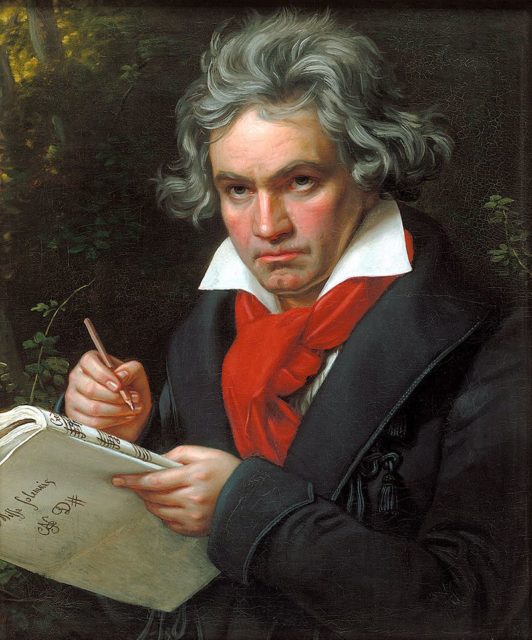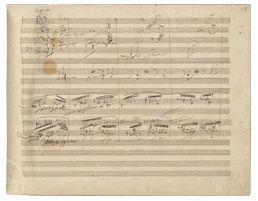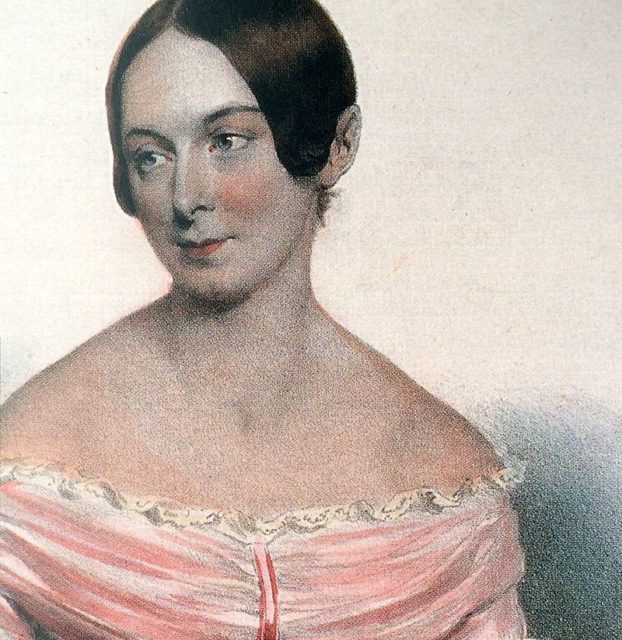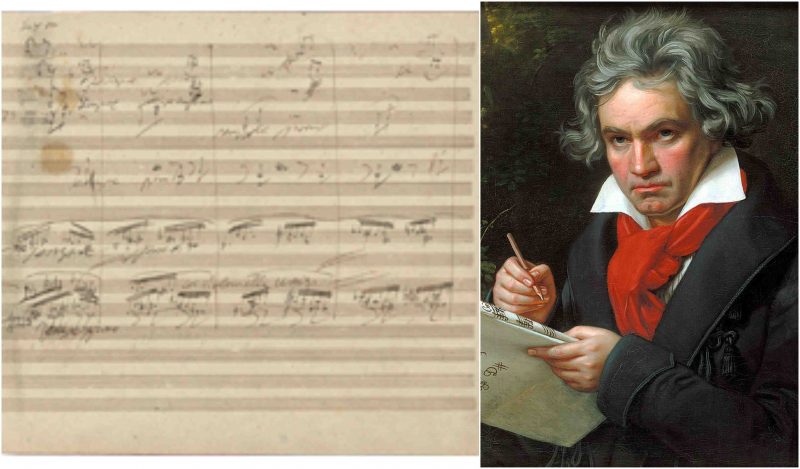Although his major works had primarily been premiered in Vienna, Beethoven was eager to have his latest composition performed in Berlin as soon as possible after finishing it, since he thought that musical taste in Vienna had become dominated by Italian composers such as Rossini. When his friends and financiers heard this, they urged him to premiere the symphony in Vienna through the form of a petition signed by a number of prominent Viennese music patrons and performers.

Beethoven was flattered by the adoration of Vienna, so the Ninth Symphony was premiered on 7 May 1824 at the Theater am Kärntnertor, along with the overture The Consecration of the House (Die Weihe des Hauses) and three parts of the Missa Solemnis (the Kyrie, Credo, and the Agnus Dei). This was the composer’s first on-stage appearance in 12 years; the hall was packed with an eager audience and a number of musicians

There are a number of anecdotes about the premiere of the Ninth. Based on the testimony of the participants, there are suggestions that it was under-rehearsed (there were only two full rehearsals) and rather scrappy in execution. On the other hand, the premiere was a great success. In any case, Beethoven was not to blame, as violinist Joseph Böhm recalled: “Beethoven directed the piece himself; that is, he stood before the lectern and gesticulated furiously. At times he rose, at other times he shrank to the ground, he moved as if he wanted to play all the instruments himself and sing for the whole chorus. All the musicians minded his rhythm alone while playing”.

When the audience applauded — testimonies differ over whether at the end of the scherzo or the whole symphony — Beethoven was several measures off and still conducting. Because of that, the contralto Caroline Unger walked over and turned Beethoven around to accept the audience’s cheers and applause. According to one witness, “the public received the musical hero with the utmost respect and sympathy, listened to his wonderful, gigantic creations with the most absorbed attention and broke out in jubilant applause, often during sections, and repeatedly at the end of them. The whole audience acclaimed him through standing ovations five times; there were handkerchiefs in the air, hats, raised hands, so that Beethoven, who could not hear the applause, could at least see the ovation gestures.”
